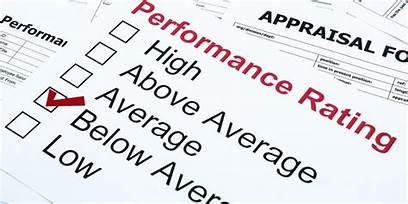
This morning’s buzz is written by Ann Marie Townshend, City Manager of Lewes, Delaware, as small coastal town of about 3,000 residents.
What I Am Reading: The Bible (the Gospels specifically)
What I Am Listing To: The Lines Between Us by Lawrence Lanahan
While we struggle to deal with the effects of COVID and strive to achieve racial justice in our cities and our organizations, the management challenges we experienced pre-COVID have not magically disappeared. In this morning’s buzz, I tackle the challenge of addressing poor behavior and poor performance.
I suspect I speak for nearly all managers in saying that the most dreaded part of management is having a conversation with an employee about poor performance. The sense of dread is worse than walking into a Council meeting where you are expecting to be ambushed. While dealing with poor performance is uncomfortable and often painful, it is also necessary to the health and culture of our organizations and by extension the communities we serve. At various times in my management career, I have encountered what have felt like hopeless situations, when employee performance or behavior was just not acceptable, and a path toward success was not visible. I have read countless books about how to deal with difficult employees and have worked hard to promote a positive culture. No matter how many books I read on these issues, addressing poor behavior and performance just doesn’t get easier. I know what I need to do and say, but the human side of delivering the feedback makes it hard. It never feels good to make someone feel bad, and if it does, then you shouldn’t be in management. Having been down this road too many times, I have found a few strategies to make this experience a little less awful.
1. Prepare ahead of time. Make notes and have specific examples to cite. It is not enough to say, “You are making careless errors.” While you may start with that, be prepared to cite specific errors. Also explain why this performance deficiency causes problems for the organization. Notes are important because as emotions flair, whether in anger or in tears, you need to make sure that you don’t become distracted or sidetracked.
2. Remain calm. It is likely that you will be met with resistance, defensiveness, or even an attempt to turn it around and put the blame on you. Be prepared for this, but also own your role in the deficiency. “I am sorry if I was not clear in my direction, but if you had questions you should have asked me.” Don’t let the employee’s reaction allow you to lose your cool. I still think about the time when I let my frustration get the best of me and raised my voice and swore in meeting with an employee. This reaction does not show respect, build trust, or provide a constructive outcome.
3. Keep it constructive. Don’t bring in issues that are irrelevant to the matter at hand. We all have that employee that pushes our buttons. We have probably picked our battles and allowed certain transgressions to pass without addressing them. This is not the time to bring up those things that you decided not to address months ago when they happened. If the performance or behavior is indicative of a pattern, identify this as you prepare, but don’t pull it out because of frustration.
4. Show empathy and compassion. As you prepare for the dreaded conversation, put yourself in the employee’s shoes. If your boss had to tell you that your performance was not meeting expectations, how would you want to hear the feedback? Allow the employee to respond and give feedback. Be prepared for tears and have tissues close at hand. It is a normal reaction for someone to cry out of anger or frustration. As uncomfortable as this might make you, be prepared to respond with compassion.
5. Develop corrective actions. The employee needs to understand your expectations and how his or her performance has fallen short. Use this as an opportunity to document your expectations. In cases where performance is significantly lacking and there is a genuine interest in helping the employee improve, a performance improvement plan may be helpful. There are many examples of performance improvement plans available on the internet, including through the Society for Human Resource Management. If your municipality offers an employee assistance program, you might want to reach out to them to find out if a mandatory management referral is an option. Under this scenario the employee would attend counseling sessions on work time to develop a plan to address the issue at hand.
6. The last resort. Nobody ever wants to terminate an employee, but in circumstances when you have tried to correct the behavior or performance, and the results don’t follow, this may be your only choice. If you reach this point, make sure you have all of your documentation in place. You will always want to work closely with your human resources staff and possibly your town’s attorney to ensure that you follow the proper protocols.
Obviously, consult with your human resources department to ensure that you follow your organization’s policies and any collective bargaining agreements. It is possible that your human resources department has a standard format for a performance improvement plan. (In my town of 3,000 residents, we do not have a human resources department, so our assistant city manager and I serve that role. If needed, we have consulted with an employment attorney.) If not addressed, performance issues can have a rippling effect on the morale of the organization. If not handled competently, human resource matters can be costly for your organization.
